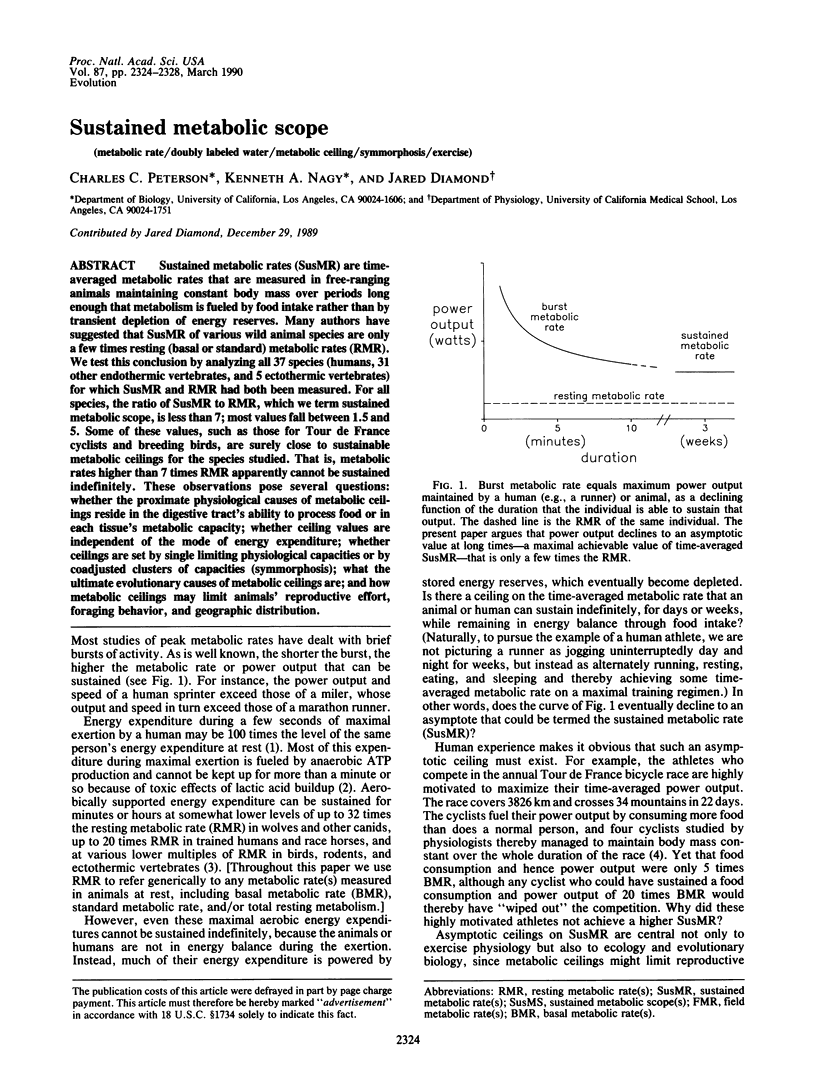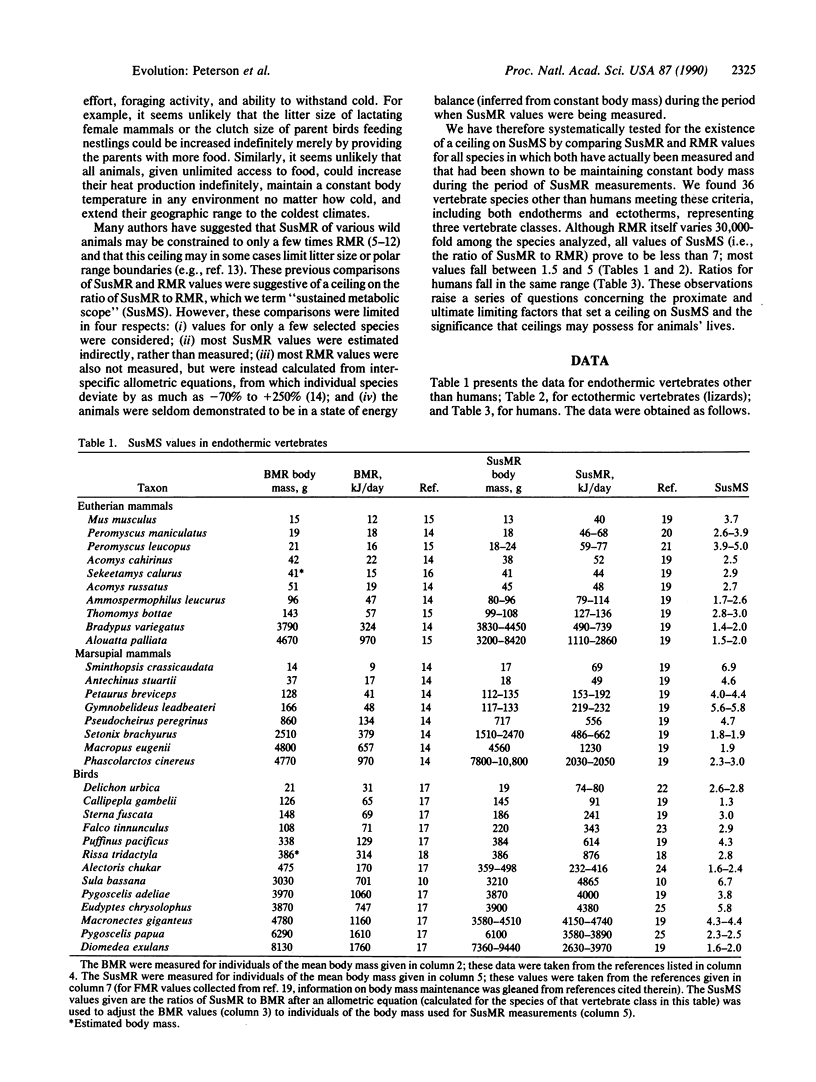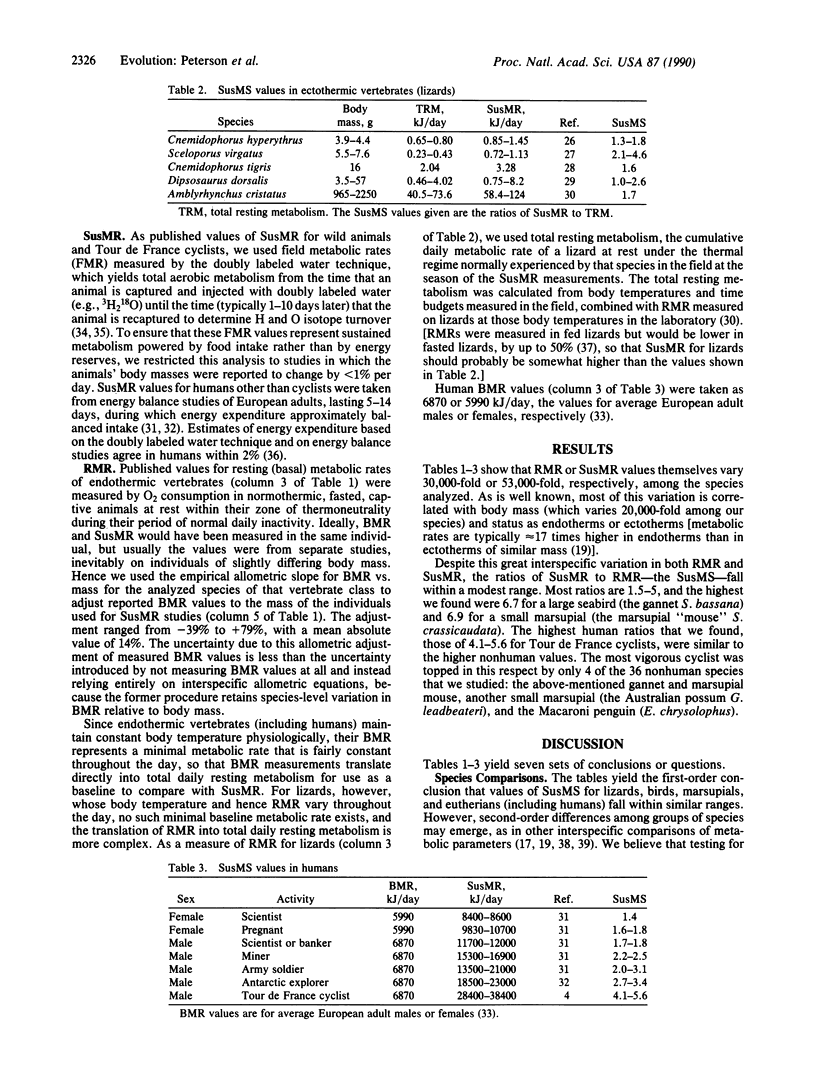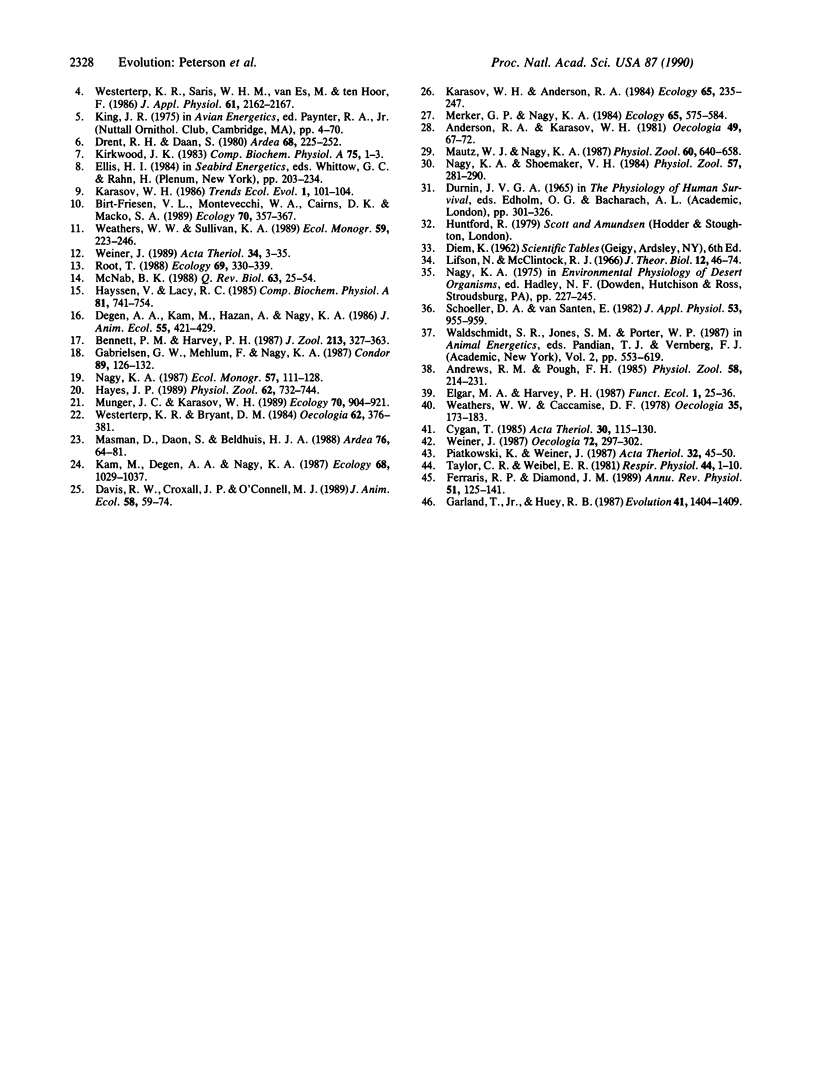Abstract
Sustained metabolic rates (SusMR) are time-averaged metabolic rates that are measured in free-ranging animals maintaining constant body mass over periods long enough that metabolism is fueled by food intake rather than by transient depletion of energy reserves. Many authors have suggested that SusMR of various wild animal species are only a few times resting (basal or standard) metabolic rates (RMR). We test this conclusion by analyzing all 37 species (humans, 31 other endothermic vertebrates, and 5 ectothermic vertebrates) for which SusMR and RMR had both been measured. For all species, the ratio of SusMR to RMR, which we term sustained metabolic scope, is less than 7; most values fall between 1.5 and 5. Some of these values, such as those for Tour de France cyclists and breeding birds, are surely close to sustainable metabolic ceilings for the species studied. That is, metabolic rates higher than 7 times RMR apparently cannot be sustained indefinitely. These observations pose several questions: whether the proximate physiological causes of metabolic ceilings reside in the digestive tract's ability to process food or in each tissue's metabolic capacity; whether ceiling values are independent of the mode of energy expenditure; whether ceilings are set by single limiting physiological capacities or by coadjusted clusters of capacities (symmorphosis); what the ultimate evolutionary causes of metabolic ceilings are; and how metabolic ceilings may limit animals' reproductive effort, foraging behavior, and geographic distribution.
Full text
PDF




Selected References
These references are in PubMed. This may not be the complete list of references from this article.
- Bennett A. F., Ruben J. A. Endothermy and activity in vertebrates. Science. 1979 Nov 9;206(4419):649–654. doi: 10.1126/science.493968. [DOI] [PubMed] [Google Scholar]
- Ferraris R. P., Diamond J. M. Specific regulation of intestinal nutrient transporters by their dietary substrates. Annu Rev Physiol. 1989;51:125–141. doi: 10.1146/annurev.ph.51.030189.001013. [DOI] [PubMed] [Google Scholar]
- Hayssen V., Lacy R. C. Basal metabolic rates in mammals: taxonomic differences in the allometry of BMR and body mass. Comp Biochem Physiol A Comp Physiol. 1985;81(4):741–754. doi: 10.1016/0300-9629(85)90904-1. [DOI] [PubMed] [Google Scholar]
- Kirkwood J. K. Minireview. A limit to metabolisable energy intake in mammals and birds. Comp Biochem Physiol A Comp Physiol. 1983;75(1):1–3. doi: 10.1016/0300-9629(83)90033-6. [DOI] [PubMed] [Google Scholar]
- Lifson N. Theory of use of the turnover rates of body water for measuring energy and material balance. J Theor Biol. 1966 Sep;12(1):46–74. doi: 10.1016/0022-5193(66)90185-8. [DOI] [PubMed] [Google Scholar]
- Lifson N. Theory of use of the turnover rates of body water for measuring energy and material balance. J Theor Biol. 1966 Sep;12(1):46–74. doi: 10.1016/0022-5193(66)90185-8. [DOI] [PubMed] [Google Scholar]
- McNab B. K. Complications inherent in scaling the basal rate of metabolism in mammals. Q Rev Biol. 1988 Mar;63(1):25–54. doi: 10.1086/415715. [DOI] [PubMed] [Google Scholar]
- Schoeller D. A., van Santen E. Measurement of energy expenditure in humans by doubly labeled water method. J Appl Physiol Respir Environ Exerc Physiol. 1982 Oct;53(4):955–959. doi: 10.1152/jappl.1982.53.4.955. [DOI] [PubMed] [Google Scholar]
- Taylor C. R., Weibel E. R. Design of the mammalian respiratory system. I. Problem and strategy. Respir Physiol. 1981 Apr;44(1):1–10. [PubMed] [Google Scholar]
- Westerterp K. R., Saris W. H., van Es M., ten Hoor F. Use of the doubly labeled water technique in humans during heavy sustained exercise. J Appl Physiol (1985) 1986 Dec;61(6):2162–2167. doi: 10.1152/jappl.1986.61.6.2162. [DOI] [PubMed] [Google Scholar]


